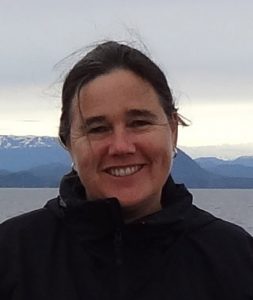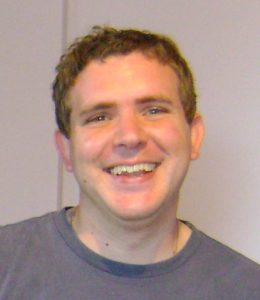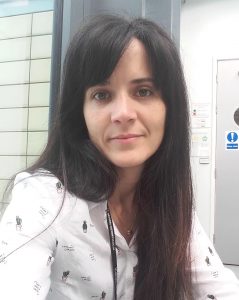About EphyBase
About the research
Sponge functional, ecological and evolutionary research has largely relied upon very few scarce genomic resources of sponges that are only found in few places of the planet. Ephydatia muelleri is a freshwater sponge that can be easily found in rivers and lakes across the entire Northern hemisphere. What makes it even more amenable is how easy to culture this sponge is, opening up some unprecedented experimental avenues to understand animal evolution. Here we present the chromosome-level genome of E. muelleri, which we have analysed to understand freshwater adaptations, evolutionary novelties, and overall genomic features of sponges in general (Nature Communications paper here). Our results point to a surprising metazoan-typical genome architecture, with conserved synteny with distant lineages such as chordates, high levels of methylation, and many particular features related to the drastic transition to freshwater of this sponge lineage.
About the researchers
 Sally Leys, University of Alberta, is a professor in evolutionary developmental biology, studying the physiology and genetic basis of coordination in non-bilaterian animals. She conceived and coordinated the Ephydatia genome project, developed the material for sequencing of both DNA and RNA, and worked on aspects of genome architecture and gene complements. Lab website: leyslab.weebly.com
Sally Leys, University of Alberta, is a professor in evolutionary developmental biology, studying the physiology and genetic basis of coordination in non-bilaterian animals. She conceived and coordinated the Ephydatia genome project, developed the material for sequencing of both DNA and RNA, and worked on aspects of genome architecture and gene complements. Lab website: leyslab.weebly.com
 Nathan Kenny, Oxford Brookes University, has a broad history of work in invertebrate comparative genomics, most recently looking at the molecular mechanisms of adaptation in freshwater and polar sponges. He is currently a postdoctoral fellow currently working on single cell sequencing projects in the Solana laboratory. For the Ephydatia genome, he worked on genome architecture, gene content, gene loss and gains, and signatures of freshwater adaptation.
Nathan Kenny, Oxford Brookes University, has a broad history of work in invertebrate comparative genomics, most recently looking at the molecular mechanisms of adaptation in freshwater and polar sponges. He is currently a postdoctoral fellow currently working on single cell sequencing projects in the Solana laboratory. For the Ephydatia genome, he worked on genome architecture, gene content, gene loss and gains, and signatures of freshwater adaptation.

Warren Francis, (SDU), is a marine biologist and bioinformatician, working on genomics of marine organisms, and the chemistry and genetics of bioluminescence. For the Ephydatia genome project, he worked on the annotation, synteny, and receptor family expansion and evolution. Link to github: github.com/wrf
 Ana Riesgo, NHM, is an evolutionary biologist studying sponge molecular biology and ecology to understand their reproduction, biosilicification, and patterns of speciation. For the Ephydatia genome, she worked on the genomic machinery activated during gemmule hatching, genome architecture and completeness, gene complements, and microbial symbiotic communities. Link to website: anariesgogil.com
Ana Riesgo, NHM, is an evolutionary biologist studying sponge molecular biology and ecology to understand their reproduction, biosilicification, and patterns of speciation. For the Ephydatia genome, she worked on the genomic machinery activated during gemmule hatching, genome architecture and completeness, gene complements, and microbial symbiotic communities. Link to website: anariesgogil.com
 April L Hill, Bates College, studies the evolution of conserved gene regulatory networks, and how changes to these lead to the diversity of animal form and function. For this project, April lead many of the investigations into the gene complements of Ephydatia muelleri, and how these genes fit into canonical pathways as described previously in other organisms.
April L Hill, Bates College, studies the evolution of conserved gene regulatory networks, and how changes to these lead to the diversity of animal form and function. For this project, April lead many of the investigations into the gene complements of Ephydatia muelleri, and how these genes fit into canonical pathways as described previously in other organisms.
 Gert Wörheide, Ludwig-Maximilians-Universität München (LMU), studies the molecular geobiology and paleobiology of marine organisms, especially their molecular biodiversity, comparative genomics, phylogenetic inter-relationships, and the evolution of biomineralization. For this project, Gert oversaw work on phylogenetics, bacterial genomics and gene expansion analysis. Lab website: http://www.geobiology.eu
Gert Wörheide, Ludwig-Maximilians-Universität München (LMU), studies the molecular geobiology and paleobiology of marine organisms, especially their molecular biodiversity, comparative genomics, phylogenetic inter-relationships, and the evolution of biomineralization. For this project, Gert oversaw work on phylogenetics, bacterial genomics and gene expansion analysis. Lab website: http://www.geobiology.eu
 Ramon E. Rivera-Vicens, Ludwig-Maximilians-Universität München (LMU), is a PhD candidate in the IGNITE project (www.itn-ignite.eu), who studies the comparative genomics of sponges as holobionts with Prof Gert Wörheide. For this project, Ramon provided analysis of bacterial content (particularly of Flavobacterium sp.), genome assembly metrics and chromatin architecture.
Ramon E. Rivera-Vicens, Ludwig-Maximilians-Universität München (LMU), is a PhD candidate in the IGNITE project (www.itn-ignite.eu), who studies the comparative genomics of sponges as holobionts with Prof Gert Wörheide. For this project, Ramon provided analysis of bacterial content (particularly of Flavobacterium sp.), genome assembly metrics and chromatin architecture.
 Ksenia Juravel, Ludwig-Maximilians-Universität München (LMU), is a PhD candidate in the IGNITE project (www.itn-ignite.eu) studying phylogenomics of non-bilaterian animals under the supervision of Prof Gert Wörheide. In the Ephydatia muelleri genome paper, she worked on the phylogeny analysis of 38 species, identification of Porifera, Demospongiae and E. muelleri unique genes and analysis of positively selected gene expansions.
Ksenia Juravel, Ludwig-Maximilians-Universität München (LMU), is a PhD candidate in the IGNITE project (www.itn-ignite.eu) studying phylogenomics of non-bilaterian animals under the supervision of Prof Gert Wörheide. In the Ephydatia muelleri genome paper, she worked on the phylogeny analysis of 38 species, identification of Porifera, Demospongiae and E. muelleri unique genes and analysis of positively selected gene expansions.
 Alex de Mendoza, UWA & QMUL, is a molecular biologist interested in the evolution of gene regulatory mechanisms such as DNA methylation. For the Ephydatia genome, Alex worked on characterising the cytosine methylation landscape in this sponge species, following his previous studies on DNA methylation on other sponges.
Alex de Mendoza, UWA & QMUL, is a molecular biologist interested in the evolution of gene regulatory mechanisms such as DNA methylation. For the Ephydatia genome, Alex worked on characterising the cytosine methylation landscape in this sponge species, following his previous studies on DNA methylation on other sponges.
 Cristina Diez-Vives, NHM, is an evolutionary biologist investigating microbe-host associations in sponges using genomic approaches. For the Ephydatia genome, Cristina worked on the characterisation of the community structure of microbial symbionts of E. muelleri across continents.
Cristina Diez-Vives, NHM, is an evolutionary biologist investigating microbe-host associations in sponges using genomic approaches. For the Ephydatia genome, Cristina worked on the characterisation of the community structure of microbial symbionts of E. muelleri across continents.
 Ryan Lister, UWA, specialises in the study of how epigenomic modifications to the genome are altered by the environment and by disease states. For this project Ryan helped with the characterisation of the cytosine methylation landscape of this sponge species, adding to his previous work on DNA methylation in related species.
Ryan Lister, UWA, specialises in the study of how epigenomic modifications to the genome are altered by the environment and by disease states. For this project Ryan helped with the characterisation of the cytosine methylation landscape of this sponge species, adding to his previous work on DNA methylation in related species.
 Joseph F. Ryan, Whitney Lab for Marine Bioscience and the University of Florida, studies the evolution of biodiversity in the Metazoa using a variety of genomic and and phylogenetic tools. For this project, Joe provided analysis of gene family loss across the Metazoa, computational insight and aided in initial genome assembly assessment and annotation. Lab website: http://ryanlab.whitney.ufl.edu/
Joseph F. Ryan, Whitney Lab for Marine Bioscience and the University of Florida, studies the evolution of biodiversity in the Metazoa using a variety of genomic and and phylogenetic tools. For this project, Joe provided analysis of gene family loss across the Metazoa, computational insight and aided in initial genome assembly assessment and annotation. Lab website: http://ryanlab.whitney.ufl.edu/
 Luis Bezares-Calderon, Exeter University, studies sensory systems and animal behaviour. His present research focusses on the neuronal mechanisms of the startle response, and the function and evolution of mechanosensory systems. For this work, Luis provided analysis of the phylogeny and evolution of Trp family genes.
Luis Bezares-Calderon, Exeter University, studies sensory systems and animal behaviour. His present research focusses on the neuronal mechanisms of the startle response, and the function and evolution of mechanosensory systems. For this work, Luis provided analysis of the phylogeny and evolution of Trp family genes.
 Lauren Grombacher, University of Alberta, is currently carrying out a Masters of Environmental Science at the University of Toronto. For the Ephydatia muelleri genome project she carried out the experimental work for gene expression in developmental stages.
Lauren Grombacher, University of Alberta, is currently carrying out a Masters of Environmental Science at the University of Toronto. For the Ephydatia muelleri genome project she carried out the experimental work for gene expression in developmental stages.
 Maša Roller, EBI, studies genome structure, evolution and epigenetics using a range of computational tools. For this project, Maša aided with analysis of chromatin structure and architecture in E. muelleri in comparison to previously sequenced species.
Maša Roller, EBI, studies genome structure, evolution and epigenetics using a range of computational tools. For this project, Maša aided with analysis of chromatin structure and architecture in E. muelleri in comparison to previously sequenced species.

Lael D. Barlow, University of Alberta, is a cell biologist studying the evolution of the eukaryotic membrane-trafficking system. For the Ephydatia genome project, he analyzed the evolution SNAP-25/23 SNARE proteins in sponges.
 Sara Camilli, Princeton, is a PhD student in the Lewis-Sigler Institute for Integrative Genomics. For this project, Sara carried out in-depth analyses of gene content and gene networks, comparing E. muelleri with related and more distant species.
Sara Camilli, Princeton, is a PhD student in the Lewis-Sigler Institute for Integrative Genomics. For this project, Sara carried out in-depth analyses of gene content and gene networks, comparing E. muelleri with related and more distant species.